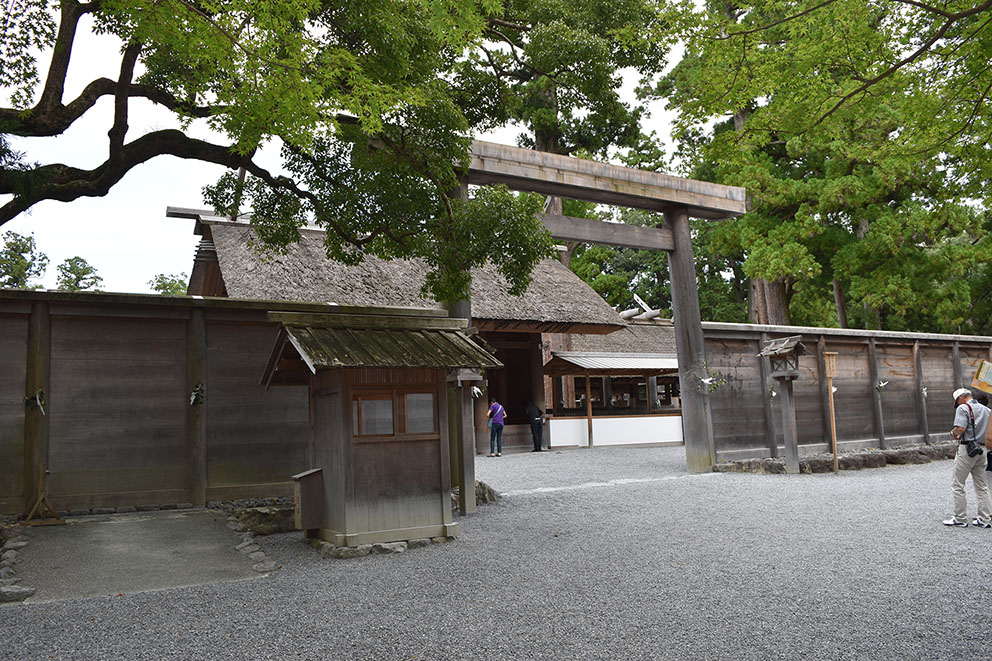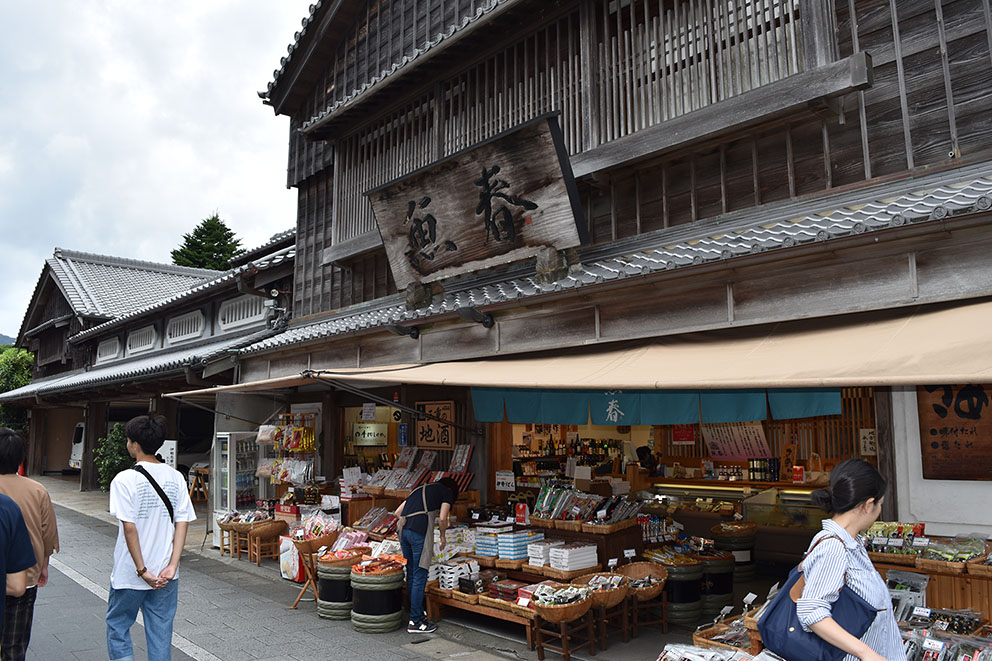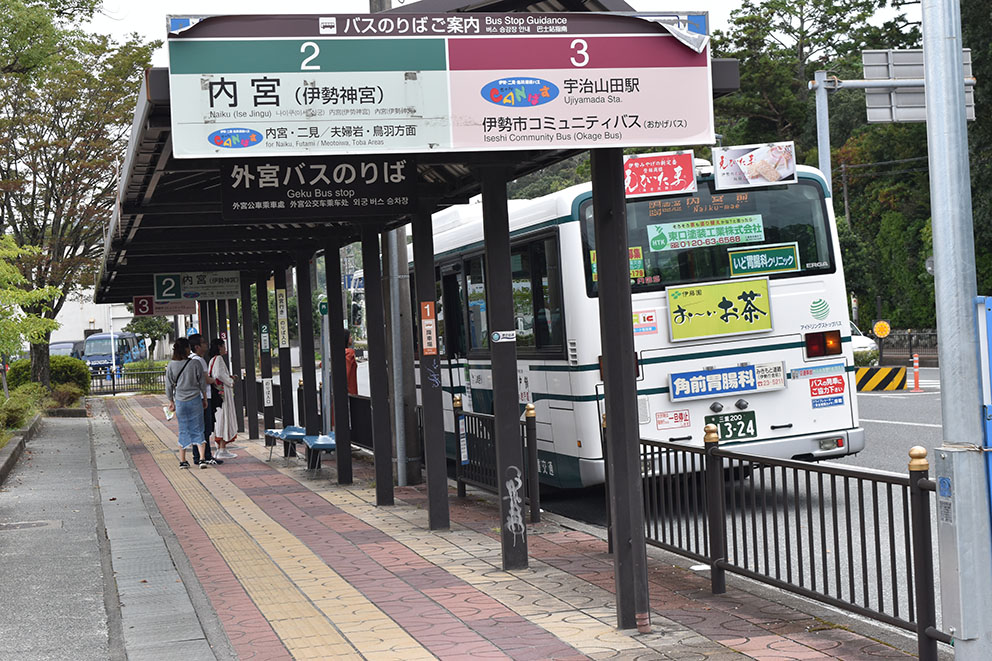Gateway to Iseji
Ise is a larger city (population 120,000) located on the eastern point of the Kii Peninsula in Mie Prefecture, and is the home of Ise Jingu, one of Japan’s most famous Shinto shrines.
Access to Ise is easy via train or expressway, and the Central Japan International Airport is just a ferry-boat ride away. Visitors can make use of bus or train transport for travel around the city.
Iseshi Station serves two train companies (JR Central and Kintetsu) with the JR entrance opening onto the access street of the Geku Shrine, a 10-minute walk from the station.
There is an information center and luggage delivery/storage service nearby.
Ise Jingu
Ise Jingu is an expansive shrine complex just inland from the protected southern shore of Ise Bay in the central part of Honshu, the main island of Japan.
It is composed of 125 shrines, centered around two main ones located roughly 5 km apart. Kotaijingu (Naiku or “Inner Shrine”) is dedicated to Amaterasu-Omikami. Amaterasu is the Sun Goddess and legendary ancestor of the imperial family. And Toyo’uke-daijingu (Geku or “Outer Shrine”) is dedicated to Toyo’uke-no-Omikami, the guardian deity of clothing, food and shelter (basic needs).
HINT: It is recommended to spend a day before or after your walk to fully enjoy the sacred sites.
There are two main sanctuaries, Naiku and Geku.
Naiku
Naiku’s shrine grounds are expansive and include many buildings and subsidiary shrines with the formal access for worshippers being across the Uji-bashi bridge. The main sanctuary is near the rear of the complex about 1 km from the entrance.
The main pavilion housing Amaterasu and the divine mirror are in the innermost courtyard enclosed within four rows of wooden fences.
Worshippers pay homage in front of the third-row gate. In this area, it is strictly forbidden to take pictures or videos. Special ceremonies take place in the next-level courtyard, but beyond that, only the emperor and high-ranking priests are allowed.
Geku
Geku is the other major shrine dedicated to Toyo’uke-no-Omikami, the guardian deity of clothing, food and shelter. It is a short walk southwest from the Iseshi Station through a shopping district, although not as pronounced as Oharai-machi, there is a diversity of shops and restaurants.
Unlike Naiku, there are two entrances to the grounds. Like Naiku, the atmosphere is solemn with the shrine approach on gravel among a mature, old-growth forest. Buildings that offer similar funcitons to Naiku are scattered over the grounds.
Near the main entrance is the Sengukan museum, which has exhibitions on the unique rebuilding ceremony that takes place every 20 years when all of the shrines in Ise are taken down and rebuilt from scratch.
Oharai-machi
Oharai-machi, or “purifying town,” is a district replicating Edo period streets near the entrance to the Naiku shrine. There is a plethora of traditional sweet shops, restaurants serving local food and snacks, souvenir shops, etc. along the 800-meter-long street.
In the middle is Okage-yokocho, or “blessing alley,” a collection of around 60 stalls selling foods, crafts, and nostalgic souvenirs. Oharai-machi is one of the most visited tourist sites in the area, bustling with visitors year-round.
HINT: Try Ise Udon noodles (soaked in a soy-based sauce) or Akafuku (mochi rice confection covered in red sweet bean paste).
Furuichi
This once historic road linking the two main shrines through the Furuichi entertainment district was destroyed during World War II and is now a residential neighborhood.
But know that buses between Naiku and Geku run fairly regularly.



